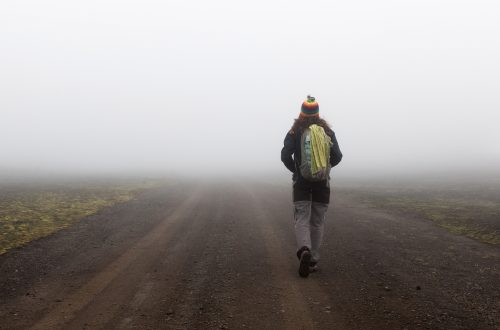For years, my mornings were nothing more than the messy prelude to the “real” part of the day. An alarm that yanked me out of dreams, a rushed shower, coffee gulped half-hot, half-cold depending on how many emails I dared to check in between sips. The morning was a blur of clocks and obligations, a race against time that I usually lost, even on the days I technically showed up where I needed to be.
I can’t trace the exact moment it changed, but I remember one morning when I simply didn’t move as quickly as usual. Maybe I was tired, maybe I didn’t care, but instead of jolting upright when the alarm sang, I lay still and watched the way the light collected on the wall. The sunlight was fractured through the blinds, strips of brightness stretching across the room like ribbons. It looked different than it usually did, not because the sun had changed, but because I had actually looked. And for once, the day didn’t feel like something attacking me; it felt like something opening up, waiting.
From then on, I began experimenting with what I now call my “slow mornings.” Not an official routine, not some meticulously designed ritual, but a simple refusal to start the day at a sprint. I still wake up at the same time, still get where I need to go, but I let myself stretch the space between waking and moving into something softer.
At first it felt indulgent, almost wasteful. Who was I to take twenty minutes just to sip tea in silence when the world was spinning at its usual frantic speed? But slowly I realized those minutes weren’t wasted — they were the hinge on which the rest of my day turned. A calm morning didn’t guarantee a calm day, but it gave me a thread of steadiness to hold onto.
One of my favorite discoveries during these mornings is the sound of the world before it fully wakes. There’s a hushed quality to everything, even in a city. Cars hum differently, softer, like they’re reluctant to disturb the quiet. Birds make their first tentative calls. Even the air feels fresher, as though it hasn’t yet been trampled by the day. When I step outside for a moment with a mug in my hand, I feel like I’ve slipped into a secret that most people rush past.
It’s not that I’ve transformed into someone who does yoga at dawn or journals for hours before breakfast. My slow mornings are much simpler than that. Sometimes I sit on the floor with a blanket around my shoulders, staring out the window at nothing in particular. Sometimes I cook breakfast slowly, letting the smell of toast or eggs fill the space instead of just grabbing whatever will get me out the door fastest. And sometimes, honestly, I just do everything the same way I used to, but with a gentler pace — moving slower, noticing more.
The difference is subtle but striking. On mornings when I give myself that space, the day doesn’t feel like it owns me. Even when it unravels later — the missed bus, the overflowing inbox, the endless small irritations — I don’t unravel with it as quickly. The memory of that quiet beginning lingers, like the warmth of a hand you held even after it let go.
There are days, of course, when I slip back into old habits. I oversleep, panic, grab my phone, and tumble into the whirlpool of urgency. Those days remind me why I choose slowness whenever I can. The contrast is sharp — like biting into something too cold after a warm drink, a shock to the system that makes you wince.
What fascinates me most is how little it takes to change the texture of a morning. It isn’t about carving out hours or inventing a whole new lifestyle. It’s about choosing not to let the first minutes of the day be stolen by speed. It’s about standing still long enough to actually taste your coffee, to notice the way the sky shifts from gray to blue, to feel your feet against the floor before they carry you away.
I think part of the magic is that mornings hold a kind of vulnerability. The day hasn’t hardened yet; it’s pliable, malleable, like clay before it’s baked. When I move gently through that space, I feel less like I’m bracing for impact and more like I’m being welcomed into something. It’s a subtle but profound difference — to enter the day with softness instead of resistance.
Sometimes I wonder why it took me so long to figure this out. Maybe because slowness is easily mistaken for laziness, and I’d absorbed the idea that mornings should be efficient, productive, disciplined. But when I look back, the mornings that stay with me are never the ones where I checked off the most boxes before noon. They’re the ones where I allowed myself to exist without rushing, where I noticed the way butter melts unevenly on toast or how a neighbor’s curtains sway in the breeze. The little moments that don’t add up to anything except a memory of being alive.
Now, even on the busiest days, I try to claim at least a fragment of slowness. A few deep breaths before I unlock my phone. A moment leaning against the counter with a warm cup in my hands. A pause at the window, watching how the light lands on the street. These fragments aren’t grand, but they’re enough to remind me that the day isn’t just something to survive. It’s something to meet, to enter, to feel.
So when people ask me if I’ve changed my routine, I tell them not really. I still wake, still eat, still leave the house like everyone else. But the truth is, I’ve changed how I meet the morning. And that change, as small as it looks from the outside, has made all the difference inside.
Because now, instead of bracing myself for the day like a wave about to crash, I greet it slowly, the way you open a letter you’ve been waiting for — carefully, deliberately, savoring the unfolding.





